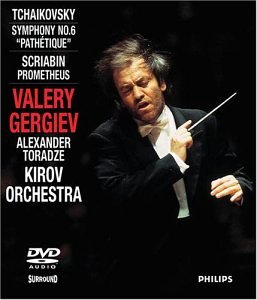I was just trying to troubleshoot another member's issues with ripping DVD-A and I noticed something interesting.
As many know, DTS Entertainment started issuing DTS-CDs in the late '90s- stuff like Toy Matinee, Marvin Gaye's Forever Yours, Don Henley's End Of The Innocence, etc. Many of these titles were later redone as DVD-A or SACD, and in some cases both.
However, I'm noticing on several of the DVD-A versions that the sample rate is still CD quality (44.1).
My first thought was that for certain albums the multi-tracks were done in early digital with lower sample rates. The Toy Matinee album, having been recorded in the early '90s, could fall into that boat.
But then I realized two things:
I guess this would mean that these 44.1/24 DVD-A titles from DTS are really no better than the original DTS discs.
Though to really prove it, you'd probably have to line up frequency graphs from both the DVD-A version and DTS-CD version of one of these titles and see if they're the same.
Unfortunately I don't own any of the affected titles in both formats...the only title I have in DTS-CD and DVD-A is Gaucho, and not only is the DVD-A 96/24 (likely up-sampled), it's an entirely different mix!
Here's the title's I've identified so far: these are DVD-A's with MLP 44.1/24 that were previously issued as DTS-CD. There are probably others I missed.
And just for the record, I'm just doing this because I think it's interesting to analyze (it had been previously found that some DVD-A's are actually sourced from SACD masters), DTS-CD and DVD-A are both great formats and both sound excellent to my ears. The quality of the surround mix is what matters most to me.

As many know, DTS Entertainment started issuing DTS-CDs in the late '90s- stuff like Toy Matinee, Marvin Gaye's Forever Yours, Don Henley's End Of The Innocence, etc. Many of these titles were later redone as DVD-A or SACD, and in some cases both.
However, I'm noticing on several of the DVD-A versions that the sample rate is still CD quality (44.1).
My first thought was that for certain albums the multi-tracks were done in early digital with lower sample rates. The Toy Matinee album, having been recorded in the early '90s, could fall into that boat.
But then I realized two things:
- There are DVD-A's of early digital titles that have been up-sampled to 96/24 (Dire Straits' Brothers In Arms and Donald Fagen's The Nightfly, to name two)
- Some of these titles were recorded decades earlier on analog tape and could've been captured at higher resolution (Marvin Gaye).
I guess this would mean that these 44.1/24 DVD-A titles from DTS are really no better than the original DTS discs.
Though to really prove it, you'd probably have to line up frequency graphs from both the DVD-A version and DTS-CD version of one of these titles and see if they're the same.
Unfortunately I don't own any of the affected titles in both formats...the only title I have in DTS-CD and DVD-A is Gaucho, and not only is the DVD-A 96/24 (likely up-sampled), it's an entirely different mix!
Here's the title's I've identified so far: these are DVD-A's with MLP 44.1/24 that were previously issued as DTS-CD. There are probably others I missed.
- Toy Matinee
- Marvin Gaye Collection (the DTS-CD version is called "Forever Yours" and has a reshuffled track order)
- Diana Krall- Love Scenes
- Sting- Brand New Day
And just for the record, I'm just doing this because I think it's interesting to analyze (it had been previously found that some DVD-A's are actually sourced from SACD masters), DTS-CD and DVD-A are both great formats and both sound excellent to my ears. The quality of the surround mix is what matters most to me.
Last edited:







